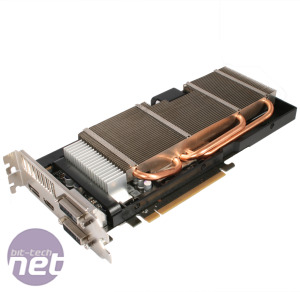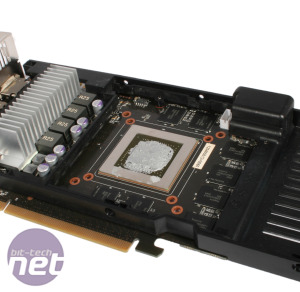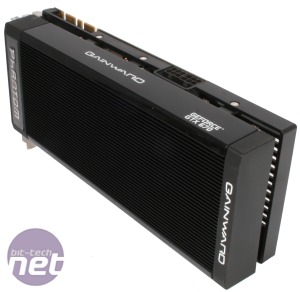Performance Analysis
In our launch GTX 670 2GB review, we found the stock card to be between five and ten per cent slower than a GTX 680 2GB. We were therefore intrigued to see how the Phantom would fare, would it’s ten per cent overclock mean it could match the GTX 680, despite having less stream processors?The answer to this, in our first test game at least, was an emphatic yes, with the Phantom just about matching a stock clocked GTX 680 2GB at both 1,920 x 1,080 and 2,560 x 1,600 resolutions; evidently the slightly superior memory clock of the Phantom made up for the extra stream processors and higher potential boost speed of the GTX 680 2GB. As we expected, the Phantom slipped back slightly from the more expensive GTX 680 2GB once we upped the resolution to 5,760 x 1,080, though notably only by a negligible margin.
As usual with Nvidia cards, Battlefield 3 was kind to the Phantom; it was able to outperform all AMD cards, even the £380 Radeon HD 7970 3GB GHz Edition at 1,920 x 1,080, however it fell behind the range topping red card at higher resolutions. The difference between the Phantom and a stock clocked GTX 680 2GB was also more pronounced in our Battlefield 3 testing, with the Phantom constantly closely trailing the GTX 680 2GB like some sort of loyal graphics card dog.
Dirt 3 and Skyrim told much the same story, with the Phantom besting a stock speed GTX 670 2GB by a steady eight to ten per cent margin, putting it right on the heels of the GTX 680 2GB. This is an impressive result for the Phantom, all told, as with stock GTX 670 2GB cards retailing at between £280 and £300, the ten percent premium you’re paying for the Phantom seems reasonable.
One area that isn’t quite as rosy however is the cooler strapped to the card. It does a stand up job of cooling the GPU (we saw a delta T of 7oC when idle and 47oC when under full load) but this comes at the cost of noise, especially when the going gets tough. In our power and thermal testing we observed the fans spin up to 62% of full speed (2250rpm) when the card was fully stressed, a setting which emitted a distinctly distracting whooshy hiss. This is disappointing, as third party coolers need to be superior to the stock option to justify their expense.
Overclocking
Naturally no graphics card review would be complete without trying to see how much extra bang we were able to extract from the card, so we set about pushing the Phantom above its factory set clocks using the bundled overclocking software. This time proved fruitful, as we were able to raise the GPU clock by an additional 100MHz, and the memory clock by 200MHz (800MHz effective).This provided a small boost in Battlefield 3, raising both the minimum and average framerates by 2fps, something which put the Phantom solidly ahead of a stock clocked GTX 680 2GB. As you’d expect, this also produced more waste heat, meaning that we saw a (still respectable) overclocked load delta T of 53oC.
Conclusion
At £330, the Gainward GTX 670 2GB Phantom is priced extremely well; it offers around ten per cent extra performance over a stock GTX 670 2GB, and retails for around ten per cent more than one too - we can’t say much fairer for that. It’s also well priced against other competing cards - only the GTX 680 2GB and the Radeon HD 7970 GHz Edition outperform the Phantom regularly, and they both retail for around £380.Outside of price and performance however, things become a little less clear cut. The cooler for example (which is arguably what your extra £30 buys you, given that you could apply the Phantom’s overclock to any old GTX 670 2GB) is a triple slot model, meaning the card is less flexible than a stock card. We could forgive the chunky cooler if it was particularly quiet, but it’s not; the fans spin up to easily audible levels during gaming.
As a consequence, the GTX 670 2GB Phantom is difficult to recommend, despite being based on an excellent GPU and offering good performance. This is because you'll be better off with a stock card, unless you don’t particularly care about noise or are reluctant to apply your own overclock.
-
Value23 / 30
-
Features25 / 30
-
Performance27 / 40


MSI MPG Velox 100R Chassis Review
October 14 2021 | 15:04













Want to comment? Please log in.